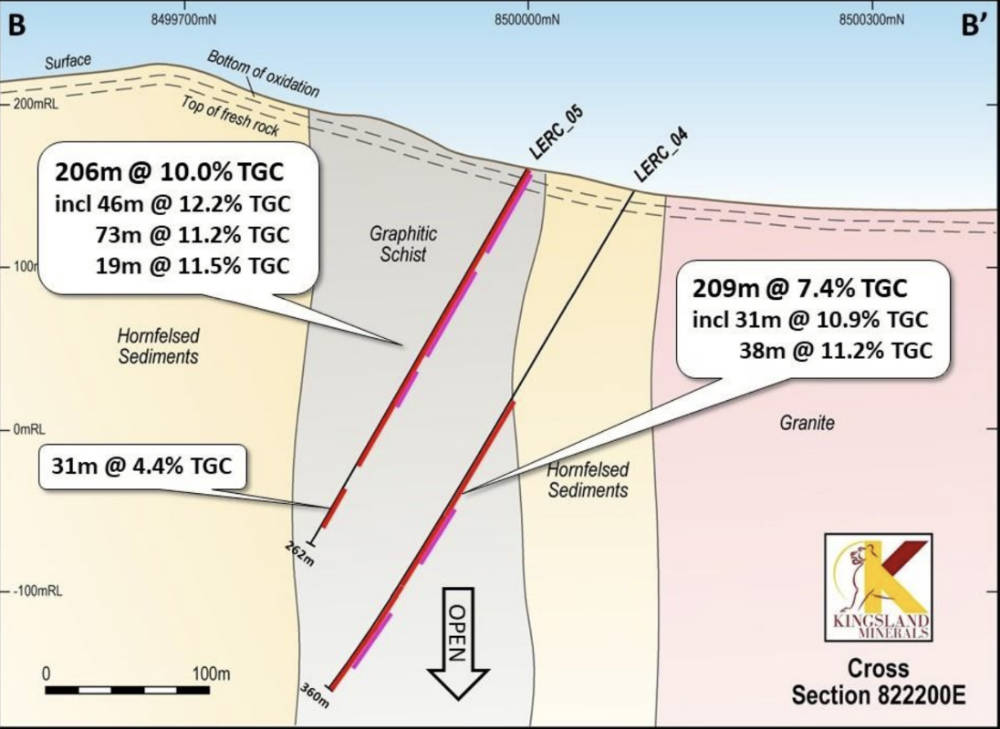‘World Class’: Kingsland rerates on 206m at 10% graphite hit
Mining
Mining
Bonanza intersections topping out at 206m grading 10% graphite have proved the “world class” scale and grade potential of Kingsland’s Leliyn project in the Northern Territory.
Kingsland Minerals’ (ASX:KNG) flagship project, which hosts a 20km outcropping graphitic schist with a conceptual Exploration Target of between 200Mt and 250Mt grading 8% to 11% TGC.
The company is now looking to convert a portion of that target into resources, with RC drilling delivering consistently thick, high-grade hits.

Leliyn’s latest diamond drilling results outstrip previous intersections.
Notable assays are:
Kingsland notes that mineralisation has now been outlined over a 5km strike and remains open both along strike and at depth.
It adds that two holes were drilled at the north-western extremity of the current drilling area and show that these massive widths and grades are open along strike to the north.
“These latest results are globally significant and exceptional by any measure. The widths, grade, and shallow nature of the mineralisation show Leliyn is on track to capitalise on the huge global demand from the lithium battery industry for graphite battery anode material,” managing director Richard Maddocks says.
“We are about to commence metallurgical test-work with the aim of establishing Leliyn as a major future supplier of Australian graphite for use in lithium batteries.”
With four diamond holes now completed and assayed on the western side of the target zone, the company will now collect composite samples for metallurgical test work.
These will be submitted during September with results taking two to three months to establish the viability of the graphitic schist to produce a graphite concentrate of a quality that is amenable to further downstream purifying and processing with the eventual goal of producing purified spherical graphite for use as battery anode material.
Additionally, small sections of core from all core holes have been submitted for thin section petrographic analysis and these are expected to be announced as they are received and assessed. This work will provide indications of mineralogy and graphite flake size.
Kingsland is also continuing RC and diamond drilling to both infill and extend the graphite mineralisation.
This article was developed in collaboration with Kingsland Minerals, a Stockhead advertiser at the time of publishing.
This article does not constitute financial product advice. You should consider obtaining independent advice before making any financial decisions.